Great Blue Heron - Ardea herodias
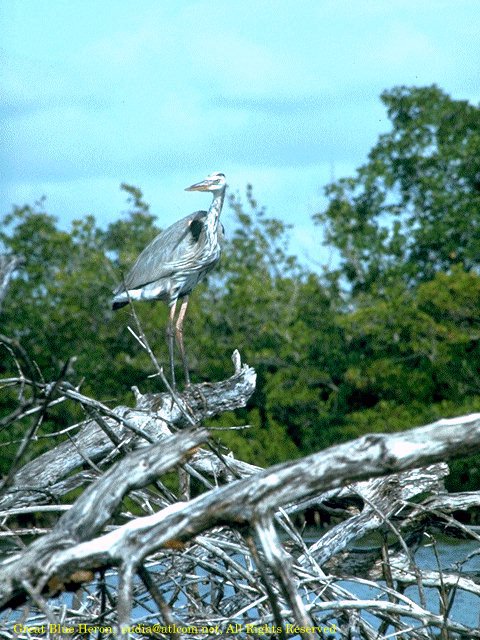
![]()
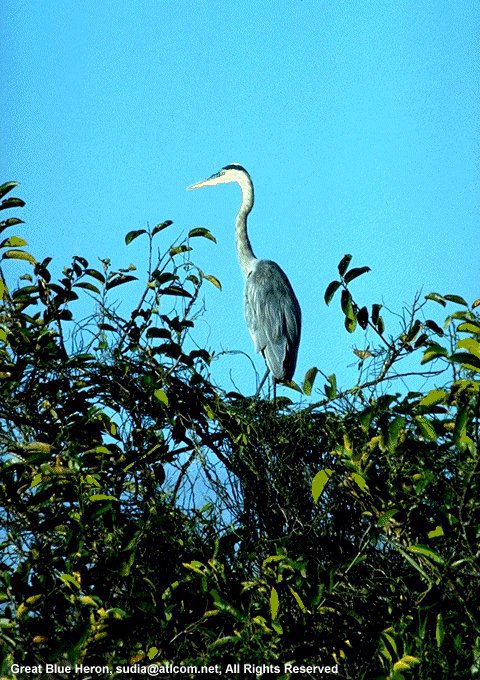
![]()
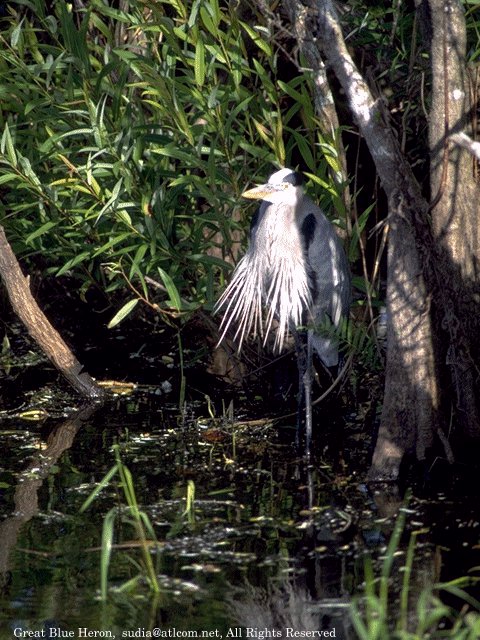
![]()
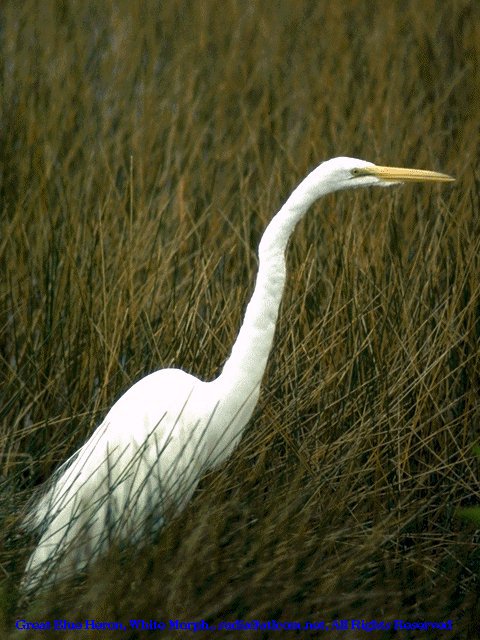
![]()
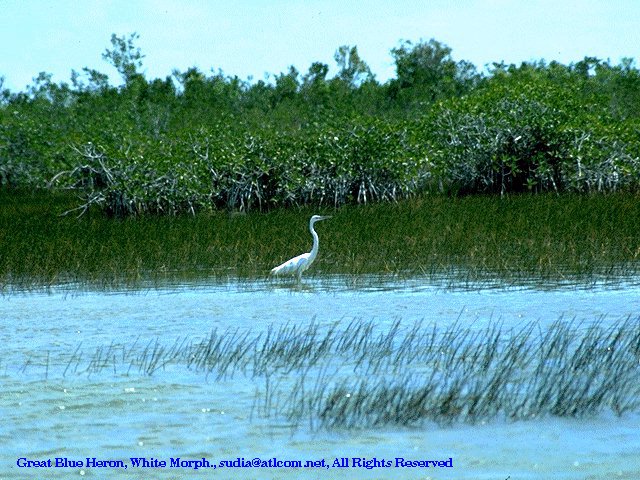
![]()
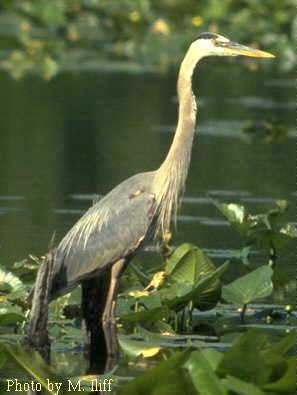
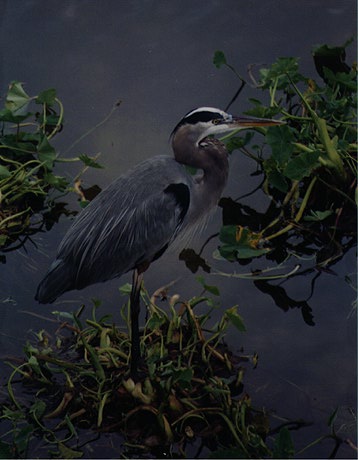

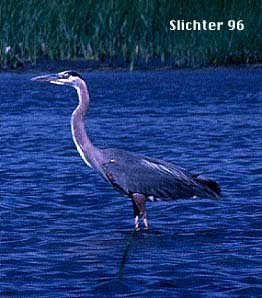
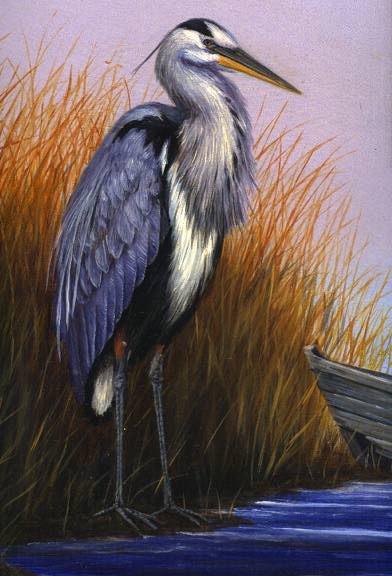
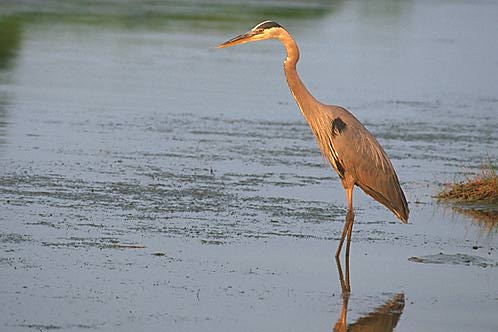
Also known as Big cranky, blue crane, crane, gray crane, long john, poor joe, Treganza's heron.
What is the scientific name?
Ardea herodias
Pronounced ARE-dee-ah her-ODE-ih-as
What does it mean?
"Heron heron." Ardea means "heron" in Latin. Herodios means "heron" in Greek. Where are they located? How many subspecies are there? Four subspecies exist in the world and all occur in North America. A.h. wardi occurs from Kansas and Oklahoma to Florida and A.h. herodias occurs over almost all the rest of North America, including southern Oregon. A.h. fannini is found on the Pacific coast from southeastern Alaska to the coast of Washington and A.h. occidentalis occurs in the extreme south of Florida (Hancock and Kushlan 1984).
Where do they live?
The great blue heron lives in and around salt and freshwater environments. In Oregon, they may be found all along the coast and the Rogue River, in addition to other rivers, streams and lakes (Gabrielson and Jewett 1940; Werschkul et al 1977).
What do they look like?
Blue gray in color with a black stripe above each eye extending to the back of the neck as a plume. Black streaks occur on a white foreneck. The bill is long, large and yellowish. The legs are long and grayish with reddish thighs.
How big are they?
Great blue herons are between 38 and 54 inches in length (Hancock and Kushlan 1984). Males are slightly larger than females (Terres 1980). They have a wingspread of up to 6 feet (Peterson 1960) and weigh between 5 and 8 pounds (Palmer 1962).
How long do they live?
Sixty-nine percent of new born great blue herons die in their first year (Hancock and Kushlan 1984). Two of the oldest known great blue herons have lived 23 years, 3 months (Clapp et al 1982) and 20 years (Kennard 1975), respectively.
How fast can they fly?
Two separate studies measured a cruising speed between 19 and 29 miles per hour (Palmer 1962) and another study recorded 23 miles per hour (Wood 1933).
What do they eat?
Great blue herons eat fish, frogs, salamanders, snakes, small mammals, land insects, birds, and some plants. One study showed their diet consisted of 71.55% fish, 8.15% insects, 8.91% crustaceans, 4.25% amphibians and reptiles, 4.66% mice and shrews, and 2.48% miscellaneous animal and plant matter. Another study found 75.83% fish, 1.67% aquatic beetles, and 22.50% aquatic plants (Palmer 1962).
Interesting notes: This is the best known and most widespread of all North American Herons. One subspecies of the great blue heron is the great white heron (A.h. occidentalis), named for its totally white plumage. Formerly a separate species, it is now considered a "white-phase" of the great blue heron. "Phase," in ornithology, is usually used to describe the coloration of a subspecies. When I first heard of a bird's "red-phase" or "white-phase" I immediately assumed it was only that way for a short time, in the way that we all go through "phases" of our life. Picasso had a "blue-phase," for example, but it didn't last. The "white-phase" of the great blue heron, however, does not change and a more accurate label would be "white-version." The great white heron is confined largely to southern Florida, but is reported to show up in other areas of North America (Palmer 1962).
Great blue herons nest together in colonies, otherwise known as a heronry, and are sensitive to the effects of human disturbances. In one study of nesting behavior on the Oregon coast, heronries (with 15 to 161 active nests per heronry) were found in the tops of red alder, western hemlock, and sitka spruce. The study showed that there were far more active nest sites in isolated areas than areas adjacent to logging (Werschkul 1976) indicating a preference for areas away from human activity. Great blue herons often nest in the tops of trees in addition to rock ledges, sea cliffs, and the ground (Palmer 1962).
The great blue heron hunts for fish by day as well as by night and employs two methods, "Standing" and "Walking Slowly." When "Standing" it will stand motionless in a shallow pool of water, waiting patiently until a fish comes close enough to pluck from the water. When "Walking Slowly" it carefully treads its way through the water, keeping its neck stretched outward and forward. If it catches a small fish it will immediately swallow it. If the fish is too large the heron will take it onto the shore, kill it first by beating it into the ground, then pick it apart by biting off bits and pieces (Bent 1926; Hancock and Kushlan 1984).
![]()
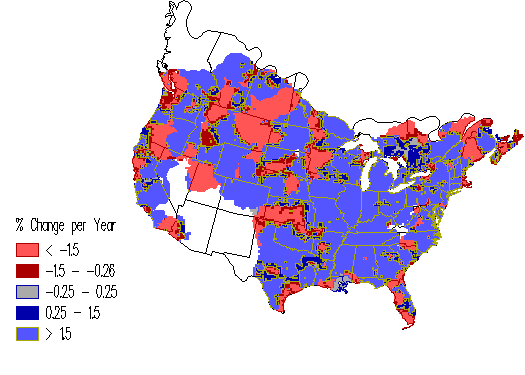
![]()
![]()
Back to Birds
 Wildflower
Seed For Sale
Wildflower
Seed For Sale